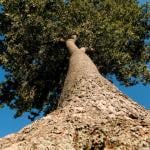Probably the most famous exorcism Jesus performed was that of the demoniac Legion from the possessed man in Gergesa who had been living in the graveyard (Mark 5:1-19, Luke 8:26-39, Matt 8:28-9:1). This is a Hollywood epic horror story. The possessed man breaks free of chains, cannot be subdued by anyone, and runs through the graveyard howling and screaming. Could this be the source of the werewolf legends? Did Stevenson have this as an analogous inspiration to his book of good and evil, The Strange Case of Dr. Jekyll and Mr. Hyde? Perhaps, but that’s not why we are talking about it here. Like many passages in the Bible, you read them a few times and you may notice something different. Jesus, and later the apostles, performed many exorcisms. Why does this one seem different. We encounter some dramatic differences that lead us to consider the message being conveyed by the encounter. Let’s explore.
The Unique Exorcism Account of Legion
The story of the encounter between Jesus and Legion appears in Mark, Matthew, and Luke with some variations. Mark’s story has more detail and so I will be focusing on his account. Of course, comparing the stories in the Gospels is useful but often we must focus our attention, saving the other rabbit trails for another day. This exorcism has several notable differences for other exorcism accounts in Mark:
- There are multiple entities in the possessed person. These are referred to as “unclean spirits” as opposed to evil spirits or demons.
- The unclean spirit addresses Jesus first, and with a unique title, “Son of the Most High God.” Further, Jesus did not silence him as he had other spirits.
- The demon is named, “Legion.” Other demons are exorcised without learning their names. Curiously, in addressing himself Legion refers in the singular, “My name”, and the plural “we are many.” As we will see, “legion” could be a reference to Roman soldiers but that isn’t all.
- The unclean spirits negotiate. They do not want to be sent out of the region and ask be sent into pigs instead. This might even be three separate points; negotiation, staying in the region, being sent into pigs.
Unclean Spirits
Now I know you may still be thinking that this isn’t such a big deal, but it really is. Scripture has patterns. These patterns help to tie some things together or differentiate things when something special is going on. For example, here the use of the term “unclean spirit” draws us to think of Jewish cleanliness laws. Cleanliness laws are part of the Old Testament Jewish identity. This points us to a Jewish thinking and an Old Testament (OT) thinking.
Possession from a Different Perspective
In the Ancient Near East (ANE) culture, possession is not unknown. However, the condition of being possessed was not defaulted to being evil. The possession could allow for additional knowledge that might be beneficial to the person inhabited. Consider the story of the possessed woman that Paul encountered in Philippi (Acts 16:16-24). She kept calling out to Paul, much like spirits proclaimed Jesus in unwanted ways, until Paul cast the the spirit out in Jesus’ name. The owner of the salve girl was very upset because they profited from her fortune telling. This ended with Paul and his buddy Silas being thrown in jail. The Jewish and Christian perspective consistently presents the possessions as evil as opposed to their culture counterparts.
Unclean Spirits from a Jewish Perspective
Unlike the rest of the culture, possession and unclean spirits are considered evil. The ANE saw them as either lesser gods inhabiting people or agents of those gods. This would be in conflict with worshiping the one god of Judaism. Unique here is the term ‘unclean spirit’. In the OT the term ‘evil spirit’ is more prevalent. In the OT, the term ‘unclean spirit’ is only used once Zech (13:2). This is during one of Zechariah’s prophetic oracles. The rarity of the term in the OT is likely because of the ritual aspects of cleanliness. This clues us in to recognizing that the there may be something beyond exorcism going on. There is a ritual sense to this possession that needs to be held in consideration when we are working out what is really going on.
The Many of Legion
Most exorcisms recorded in the Bible refer to a single entity being expelled. There is the one incident referred to regarding Mary Magdalen who was reported to have been possessed by several demons (Luke 8:2). However, that was nothing compared to the quantity of spirits that made up Legion. Further, that the term is synonymous with a group of soldiers is also revealing. Soldiers are for fighting wars.
Son of the Most High God
Legion refers to Jesus as “Son of the Most High God”. Yes, of course he was. However, this is the only time in all the NT that the term is used at all. So, we are meant to take notice. In an interesting link, this term is used in Deut 32:8 where it is the ”Most High” who divided mankind among the other created gods. While this is a fascinating topic, we cannot stray too far. Let us say that there is a sense of spiritual realm activity happening here. God had taken Israel, working through Moses, as his portion. The other people were portioned to other gods harkening back to Genesis 11 and the story of the Tower of Babel. Now, that is a lot take in, and we can cover that in another post in more detail. The important factor is that there is a spiritual conflict being pointed to.
Consider also that Jesus did not silence the spirit as in other cases. Also, after the spirit was removed Jesus uncharacteristically told the healed man to tell everyone what happened. In previous cases he tells the healed to stay quiet about it. This is not a ministry of healing but an announcement of Jesus and who he is.
Why Name the Unclean Spirit
In no other exorcism was the demon named. This is intended to catch our attention. A group of Roman soldiers was called a legion, as I mentioned above. Many commentators point out this connection. Roman soldiers for the Jewish people epitomized the unclean and detestable rule of Rome over the Jewish people. They represented the rule over the land and the people by a pagan group when they should have been ruled by God. In the Ancient Near East (ANE), when one country or group conquered another, the implication, usually boldly announced, was that the conquering country’s god was more powerful than the conquered country’s god. Another pointer towards the concept of warfare.
No other unclean spirits negotiated with Jesus. Negotiation implies some sense of power or control in the exchange. Why would the spirit think that he had any leverage over Jesus? Perhaps since the pagan gods were the more dominant in the region, Legion thought that he was under control there.
And staying in the region was important to Legion. Land was often considered a god’s home. The ruling god of the people ruled the land. The spirits may have felt they had a controlling interest in the region and wanted to maintain it.
That’s a lot to think about and we need to bring it together somehow. Perhaps Jesus was doing a lot more in this case than healing. His actions and reactions appear to have a lot to do with OT happenings and Jewish identity. Further, he is announcing his presence and actions as opposed to keeping it quiet between him and the individual he heals. Let’s assume that a larger announcement is being made. What might the announcement be?
Knowing Where You Are – Cosmic Geography
Cosmic Geography? Well, yes. A lot of times we cruise past the complex place names and clan names in the Bible. Who can pronounce them correctly anyway. Problem is that they have a purpose. The land has a history and that history has implications for later events in that land. The land where this takes place is a general region called the Decapolis – the ten Hellenistic (Greek-style) cities.
There is older biblical history and surrounding Ancient Near Easter (ANE) history shaping the understanding of the region. The history is intertwined with numerous biblical and extra-biblical themes and conflicts. I will try to summarize the important parts for our discussion here.
The Pagan Land of the Decapolis
The region of the Decapolis is roughly synonymous with Gilead. The clan of Gilead according to Moses is among the descendants of Joseph through Manasseh (Num 26). The region of the Decapolis, before it was Decapolis, was promised to a few tribes of Israel; Gad, Manasseh, and Reuben (Num 36). And here is where it gets really interesting, the conquest of the region was described as the conquering of “Og of Bashan, one of the remnants of the Rephaim” (Joshua 12:3). So, the region in the older days was called Bashan and Og was the ruler. In the ANE, land was a home of the god who ruled it, usually through a chosen human ruler. Let’s summarize a few of the pagan gods that called this region home before talking about Og:
- For the ‘Canaanites’ and others, the Bashan region, or a part of it, clearly represented ‘Hell’. The house of the deified dead kings, a little like Olympus and Hades intermingled.
- This is also called the ‘land of the Rephaim’ (Deut 3:13). The wording could also be translated as “the hell of the Rephaim’. This is the abode of these other gods, Pss 68:16.
- Roman influence had this region replete with monuments to Tyche, Artemis, Zeus, and Nymphs in direct offense to the Jewish monotheism. These gods are associated with Olympus, which is also associated with Mt Hermon in some cases.
All of these gods from an ANE and Jewish perspective would be in competition with the God for possession of the land and the people.
Og of Bashan
Mt Hermon is in the Northern portion of the Decapolis region, also known as the Bashan region. Mt Hermon is the reported place where the angels, in defiance of God, had come down to mate with humans (Gen 6:1-4, 1 Enoch 6:1-6). Og and the Rephaim are related to the ‘giants’ who resulted from the mating of the spiritual beings with human woman. Yes, this sounds odd, but it is in the Bible so we will go with it. Og is a giant much in the way that the better known Goliath was. Giants are mentioned several times. When Moses sent spies (Num 13) they came back reporting that they encountered people of great height and the Nephilim, or giants (Num 13:32-33). In many cases during Moses’s and Joshua’s conquering of the land of milk and honey involved contending with these giant races.
Above I referenced a book called 1 Enoch. This is a book not included in the bible called a pseudepigrapha – a fancy name for saying someone wrote the book under the pen name of Enoch. While not included in the bible such books can help us understand how people thought in those days. Wanted to make sure you wouldn’t be looking in your bible to find it wondering, “what crazy bible is Paul using?”
The land of the Decapolis, the land of Gilead, the land of Bashan is the abode of Ancient Near Eastern (ANE) gods and the defiant angels (Ge 6:1-4) that work in direct competition with God. The land is essentially the central region of cosmic warfare, a fact evidently known to the Jewish people due to the numerous biblical references that support this conclusion. I understand this a lot to take in and if you wanted to fully absorb it there is much reading to do (Michael J. Heiser’s Unseen Realm might be a good start for one perspective). The important point is that the place of the Decapolis would have been representative from several Jewish OT perspectives as a place of spiritual uncleanliness and the home of many other gods rebelling against the one true God.
So, what was this Exorcism Really?
Jesus did not spend much time at all in this highly Gentile (non-Jewish) region called Decapolis. His ministry was focused on the Jewish people and there simply were very few Jewish people in this region. So, he was not ministering to the Jewish people there. Unliked his other interactions with the spiritual healing, he announced it and had the healed person announce it everywhere he went. Jesus refused the man’s request to return to Galilee with Jesus and his disciples. He needed the man to stay in the Decapolis, the land of the foreign gods and announce the coming of the one true God.
Our conclusion is this. Given the unique location, its history as the hot bed of spiritual warfare, and nature of the exorcism we should interpret Jesus work in this exorcism as an announcement of the coming kingdom of God and his intention to reclaim all of creation. This is more than the healing of a particular individual; it is a healing of creation. Jesus was putting the other gods on notice – God’s kingdom has come.















